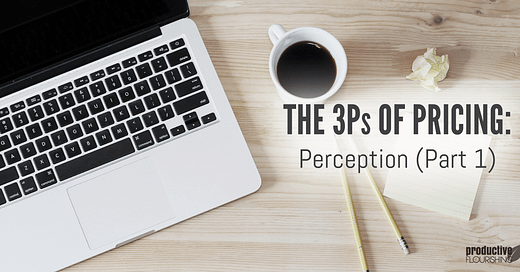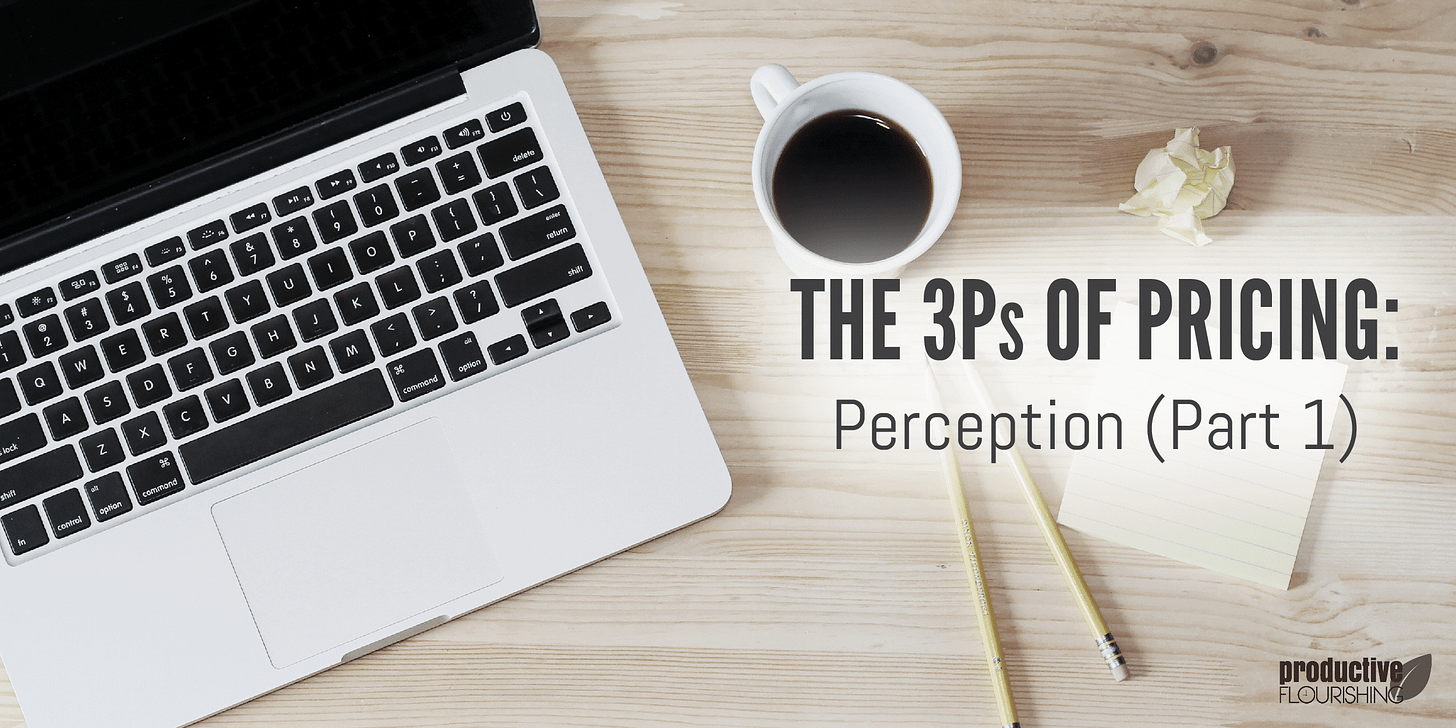The 3Ps of Pricing: Perception (Part 1)
Learning how to price offers is one of the most challenging skills that an entrepreneur has to learn on her journey. As much as you might want a quick how-to to walk you through exactly how to price something, I'll be up front: there is no one-size-fits-all list that will tell you the exact price to put on something. Pricing is both an art and a science that way.
I've learned a lot about pricing products and services over the last six months. The truth of it is that, though I had a good bit of knowledge about how the market worked, I didn't have a lot of understanding about it.
As you may remember, I've mentioned that one of the biggest things that I hate about entrepreneurship is pricing stuff. After I produced that video, I got serious about getting to the bottom of it; being a coach, I couldn't afford to let it be something that I wasn't comfortable with.
It's still not easy now, but at least I have a much better framework for thinking about how to go about pricing something. I'll share a little bit of that framework with you today.
Throughout this series, "product" includes products, services, events, or any type of offer you're putting out there - this just makes it easier to write and read. So, if you're a service provider, speaker, or workshop host, just understand that I'm talking to you, too.
There are three basic and interrelated considerations that you need to think about when it comes to price your product:
Perception
Placebo
Positioning
These three considerations are what I'm calling the 3Ps of pricing. Let's look at each in turn.
Perception
Write this down and think about it: there is no absolute correlation between price and value.
Value is inherently subjective, and, as such, you can't price something so that it has a certain amount of value for everyone. For instance, let's say you create a product that helps people save 4 hours on a specified task. How much is 4 hours worth?
If you tried to answer that question, you fell for the same trap that catches many of us. The only way you can answer that question is to contextualize the question to a specific person or specific demographic. If your ideal customers are designers who charge at least $75 dollars per hour and your product focuses on billable hours, then those four hours are worth $300 to them.
Even though they would have a net gain of $300 time-dollars from using your product, you might not be able to price your product at $300. Some of that relates to the other Ps we'll discuss, but you have to consider how your price relates to their perceived value. If your price is much higher than what they think your benefits are worth, they'll think your product is overpriced and probably won't buy it.
We're all familiar with overpricing products, but the real lesson I had to learn was around the perils of underpricing products. I'll talk about that specifically in its own post using Email Triage as a case study, but you have to consider that if you price your product too low, your ideal customers might not buy it because they're translating price to value and come to the conclusion that your low-priced product is also low-value.
Your challenge, then, is to come up with a price that considers the too-low range and the too-high range and falls into the green middle. Novice entrepreneurs normally have a decent gauge when it comes to overpricing because they're scared of overpricing anyway, but it's that lower edge that you'll have to watch out for, too. If you end up in the red zones of the picture above, you're going to have a hard time selling your product.
Working Hard For Your Money - Even If It's A Little Bit
The counter-intuitive truth about underpricing a product is that you'll have to work just as hard to sell an underpriced product as you will one that's slightly overpriced. The reason for this is because you'll have to actively work to get the price to not alter the perceived value of the product so that it falls below the threshold where your ideal customers won't buy it.
So, yes, the higher the price of the product, the harder you'll have to work to sell it (usually). But it doesn't hold that the lower the price of the product, the easier it'll be to sell - at a certain point, your ideal customers just won't buy it because of how they perceive the value of the product.
People don't buy products because of the actual value of the products -- they buy stuff because the price of the product closely matches their perceived value of the product. (This is where positioning come in.)
Keep in mind that Perception is one of the pre-purchase considerations when it comes to pricing, meaning that it's what's going on in peoples' heads before they buy your product. However, their perceptions about the value of the product has a strong influence on how they'll use the product, so altering the price of the product can sometimes alter the value they actually get from the product.
This is a nice segue, so in the next part of the series, I'll discuss Placebo - the post-purchase consideration that affects how you should price your product. Stay tuned!
I'd love to hear your thoughts on this post. Was this helpful? Did it scratch an itch you've been having?
P.S. Want to know more on pricing for your next launch? Check out the Epic Launch Class.
Looking for more info? Check out The 3Ps of Pricing: Placebo (Part 2) and The 3Ps of Pricing: Positioning(Part 3).





